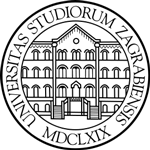Optimization and application of ray tracing algorithms to enhance user experience through real-time rendering in virtual reality
Abstract
This thesis explores the application of ray tracing algorithms in creating photorealistic scenes and their
integration into virtual reality (VR) environments. Ray tracing, an advanced rendering technique,
simulates the behavior of light rays as they travel through a scene, resulting in realistic effects such as
reflections, shadows, and refractions. The practical part focuses on implementing key elements of ray
tracing, specifically the calculation of ray-object intersections, performance optimization, and integration
with global illumination in Unity. The study demonstrates how ray tracing can enhance the visual fidelity
of VR, but also highlights the technical challenges, particularly in maintaining performance in real-time
applications. Through a case study, the key benefits and limitations of ray tracing in VR are examined,
providing valuable insights into its potential to improve image quality and user experience.

This work is licensed under a Creative Commons Attribution-NonCommercial-NoDerivatives 4.0 International License.






